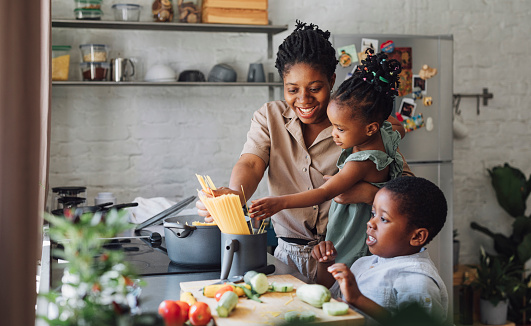Time-saving tips can help you prepare meals effectively. Planning is a practical, time-saving tip. If possible, try planning possible meal preparation early enough.
To make the planning process more effective, mark certain days with names such as “Pasta Wednesdays,” Oatmeal Fridays,” and “Junk Sundays.” Another planning method is creating a specific number of meal plans that you can easily rotate.
Having about five pantry recipes is another time-saving cooking strategy. Pantry recipes are meals you can prepare quickly with little effort and the ingredients you always have in the kitchen. A popular pantry recipe is peanut noodles, which can be prepared with soy, sesame oil, brown sugar, cooked noodles, and chili pastes within ten minutes.
You can also slice vegetables once or twice a week to save time. After slicing them, store them in air-tight containers and keep them in the freezer. When you prepare vegetable-oriented meals such as salads or soups, you will already have the vegetables cut. However, don’t slice vegetables such as tomatoes and avocados that discolor after cutting. They should be cut immediately before use.
Another time-saving tip is batch cooking-- cooking meals in large portions and storing them. You can prepare large portions of chicken or beef on weekends and use them in meals on weekdays. Store these foods in the freezer, and move them to the refrigerator to defrost before going to work.
Using cooking gadgets is another smart way to save time since they can accomplish tasks in record time. Time-saving gadgets include slow cookers that prepare meals in your absence; food processors that can blend or puree ingredients; halogen ovens that decrease cooking time; and mandolins that dice and slice foods quickly. Also, choose gadgets that take little space on your kitchen counters.
Using food shortcuts can also save time and money. For instance, if you order pizza, you can add the toppings you want from your refrigerator. Another shortcut is using frozen vegetables, which are healthier than canned vegetables because they retain more nutrients.
Having some of these ingredients readily available can help save cooking time. Sugar, spices, oils, grains, and other pantry staples last long, so buying in bulk is a practical choice. Food produce such as onions and potatoes could also be stocked up in your kitchen.
Growing your kitchen herbs is another way to reduce kitchen time. Spices like oregano, rosemary, basil, and parsley can easily be grown in gardening pots. When it is winter season, don’t grow herbs outdoor. Instead, place them indoors, on a windowsill or balcony accessible to sunlight. You can also search for greenhouses in your area that are open to the public to grow or purchase greeneries.
Another practical tip is timing yourself. Constant practice with timing lets you know the perfect moment to take specific actions in the kitchen instead of wasting time constantly observing for significant change in the meal you are preparing.
Lastly, purchase and store prepackaged convenience foods. Convenience items, such as canned beans, canned tomatoes, and instant-cooking grains are inexpensive, fast, and easy to use. You can add them to meals you prepare without worrying about additional cooking time.


